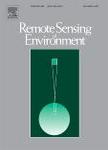版权所有:内蒙古大学图书馆 技术提供:维普资讯• 智图
内蒙古自治区呼和浩特市赛罕区大学西街235号 邮编: 010021

作者机构:Acad Sinica Taiwan Int Grad Program Taipei Taiwan Acad Sinica Inst Earth Sci Taipei Taiwan Univ Calif Riverside Dept Environm Sci Riverside CA 92521 USA Natl Taiwan Ocean Univ Dept Syst Engn & Naval Architecture Keelung Taiwan Phys Res Lab Ahmadabad Gujarat India
出 版 物:《REMOTE SENSING OF ENVIRONMENT》 (环境遥感)
年 卷 期:2021年第264卷
页 面:112624-112624页
核心收录:
学科分类:12[管理学] 0830[工学-环境科学与工程(可授工学、理学、农学学位)] 1201[管理学-管理科学与工程(可授管理学、工学学位)] 1002[医学-临床医学] 08[工学] 0816[工学-测绘科学与技术]
基 金:Ministry of Science and Technology, Taiwan [108-2111-M-001-011-MY3] Academia Sinica [AS-IA-109-M03] NASA JPL [1631379, 1653138]
主 题:Regional climate change Atmospheric CO2 El Nino-Southern Oscillation (ENSO) Pacific Decadal Oscillation (PDO) AIRS GOSAT
摘 要:Accurate projection of CO2 concentration in time and space remains challenging because of complex interplay between anthropogenic emissions, biospheric responses, and climatic variabilities. While the increase of atmospheric CO2 concentration is due primarily to fossil fuel burning, natural climate variabilities are known to introduce intermittent changes in the global CO2 growth rates. Thus, understanding the correlation of climate and carbon cycling systems is important in assessing the anthropogenic and natural impacts. Here, we report decadal CO2 variabilities in western Pacific based on data from several ground-based stations in the region and Atmospheric Infrared Sounder (AIRS). In addition to the well-established El Nino-Southern Oscillation (ENSO), there exists a decadal changing CO2 trend in the datasets mentioned above. Analysis of ground-based CO2 measurements in northern Taiwan shows a decadal signal at amplitudes of -5 ppm. In contrast, AIRS shows a similar trend but at a reduced amplitude of -1 ppm. We attribute the decadal signal to dynamical factors related to the Pacific Decadal Oscillation (PDO). This decadal signal, however, is not reproduced by the state-of-the-art data assimilation system, CarbonTacker, suggesting a gap in our knowledge of the modulation of carbon cycling systems and climate.